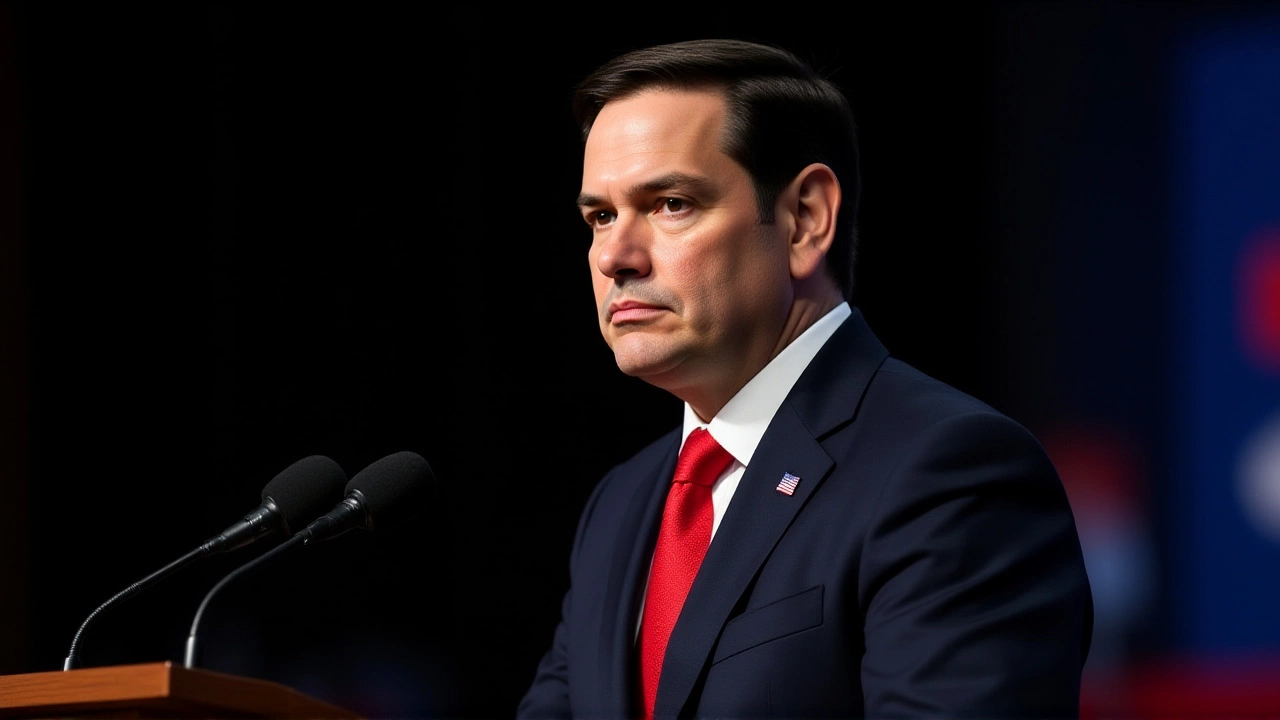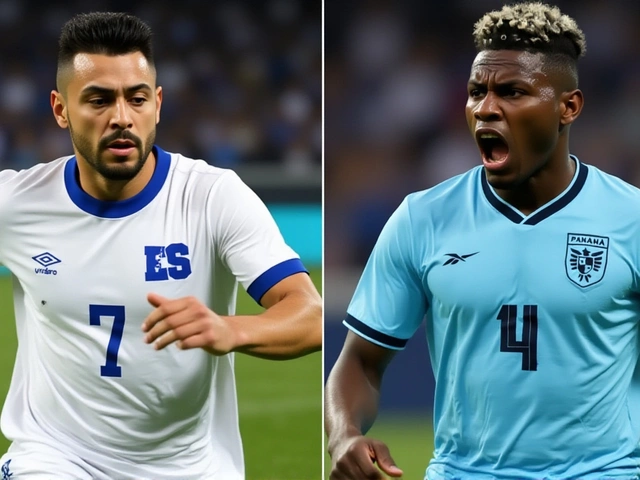When the final whistle blew at Estadio Rommel Fernandez on November 19, 2025, the roar wasn’t just from the crowd—it was the sound of a nation finally breathing again. Panama had just crushed El Salvador 3-0 in the final match of CONCACAF Group A Panama City, securing their second-ever berth in the 2026 FIFA World Cup United States, Canada, and Mexico. It’s been seven years since Panama last stood on that stage, and this time, they didn’t just show up—they claimed their place with authority.
A Night That Rewrote National History
The goals came in waves. César Blackman opened the scoring in the 17th minute with a low, curling finish after a slick one-two with Ismael Díaz, who had been thrust into the starting lineup after Christian Martínez was benched. By halftime, the score was 2-0 thanks to a perfectly executed penalty from Éric Davis, awarded after a reckless challenge by Rafael Clavel in the box. The crowd, packed to its 32,000-capacity limit, had been screaming since the opening whistle. "It could have been three, four goals," CBS Sports Golazo America analyst said at 0:11:13 in their broadcast. "Panama was all over them. This wasn’t just a win—it was a statement." Then, in the 85th minute, José Luis Rodríguez buried the dagger. A long ball over the top, a deflection, a rebound off the post—and Rodríguez, unmarked, slammed it home. The stadium exploded. Players collapsed to their knees. Fans wept. For a country that’s only qualified once before—back in 2018—this wasn’t just progression. It was redemption.The Road That Led Here
This wasn’t luck. It was the culmination of a grind. Panama entered the final matchday tied with Suriname on nine points, but with an inferior goal difference. A draw wouldn’t have been enough. They needed a win—and they needed it emphatically. Their 1-0 victory over El Salvador on October 10 had set the tone, but that match was a gritty, defensive battle. This? This was dominance. El Salvador, already eliminated, fielded a rotated squad with 10 changes from their previous outing. But even their most experienced players looked out of sync. Foul after foul, missed passes, panicked clearances. The only real threat came from Enrico Dueñas in the 62nd minute, but his shot was smothered by goalkeeper Jaime Penedo, who made his 110th international appearance that night. Panama’s midfield trio of Daniel Gómez, Abel Aguilar, and Ismael Díaz controlled the tempo like a symphony conductor. Head coach Erdan Gómez made five substitutions in the second half, not to defend, but to preserve momentum. The tactical shift—moving from a 4-2-3-1 to a 4-3-3 in the 60th minute—flooded the wings and overwhelmed El Salvador’s fragile backline. "We knew we had to be ruthless," Gómez said post-match. "This team didn’t just want to qualify. They wanted to make history loud enough for the whole world to hear."What This Means for Panama Football
The 2018 World Cup was a learning experience. Panama lost all three group games—3-0 to Belgium, 6-1 to England, 2-1 to Tunisia. Critics called them out of their depth. But behind the scenes, the federation invested in youth academies, hired foreign coaches, and pushed for more exposure in Latin American leagues. The result? A generation of players who grew up watching Messi, but dreamed of being like Blackman and Davis. This time, Panama enters the 2026 World Cup with confidence. They’ll face the top teams in the world—not as underdogs, but as a side that just beat a regional rival 3-0 on home soil to earn their ticket. And they’ll do it with a core that’s now experienced in high-stakes qualifiers. Éric Davis, 29, has become a leader. José Luis Rodríguez, 23, is the future. And César Blackman, 25, just announced himself on the world stage.
The Ripple Effect
Panama’s qualification completes the CONCACAF picture for 2026. The region now has six direct qualifiers: the United States, Canada, Mexico, Costa Rica, Jamaica, and now Panama. That’s the most from the region since 2002. The pressure’s off for the other teams—now it’s about preparation. For Panama, it’s about legacy. In the streets of Panama City, children now wear Blackman’s jersey instead of Ronaldo’s. Local schools are adding extra football sessions. The national broadcaster, TVN, is already planning a documentary series titled "Panama’s Second Dream." Even the president, Laurentino Cortizo, tweeted: "Today, we didn’t just win a game. We proved that heart beats statistics."What’s Next?
Panama will enter the 2026 World Cup draw in December 2025. They’re expected to be seeded in Pot 3, meaning they could face European powerhouses or African giants. But with their recent form, they’re no longer a team to be underestimated. The training camp in Florida begins in January. A friendly against Ecuador in March will test their readiness. And by June? They’ll be in the world’s biggest stadium, playing for more than just points—for a nation that believed when no one else did.Frequently Asked Questions
How did Panama qualify over Suriname despite both finishing with 9 points?
Panama advanced on goal difference: +5 (7 goals for, 2 against) compared to Suriname’s +3 (6 goals for, 3 against). Panama’s 3-0 win over El Salvador on November 19 was the decisive result, as Suriname drew 1-1 with Honduras on the same day. Head-to-head was tied, so goal difference broke the tie—something Panama had been building since their 1-0 win over Suriname in September.
Who scored Panama’s goals in the decisive match, and why were they significant?
César Blackman opened the scoring in the 17th minute with a clinical finish, Éric Davis converted a penalty at halftime after a foul on the edge of the box, and José Luis Rodríguez sealed it in the 85th minute with a rebound goal. Each goal came from a different generation: Blackman (midfield playmaker), Davis (veteran captain), and Rodríguez (rising star). Their combined effort symbolized Panama’s new football identity—balanced, fearless, and unified.
What’s the historical significance of Panama’s 2026 World Cup qualification?
Panama’s only prior World Cup appearance was in 2018, where they lost all three group games. Their qualification in 2026 marks the first time they’ve reached the tournament twice in their history, and only the third time any Central American nation outside Mexico, Costa Rica, or Honduras has done so. It’s also the first time Panama qualified by finishing top of their group in the final round of CONCACAF qualifying, signaling a major step forward in regional competitiveness.
How did Panama’s coaching staff change their approach between the October and November matches against El Salvador?
In October, Panama played cautiously, winning 1-0 with a compact 4-5-1 and relying on counterattacks. By November, coach Erdan Gómez switched to an aggressive 4-3-3, pushing fullbacks high and using Ismael Díaz as a false nine. The midfield was more expansive, and substitutions were made to maintain pressure rather than preserve leads. The result: 3-0, 18 shots on target, and control of 68% possession—the most Panama has ever had in a World Cup qualifier.
What impact will this have on Panama’s domestic football infrastructure?
The Panamanian Football Federation has already announced a $5 million investment in youth academies and stadium upgrades, with $2 million earmarked for the provinces. Ticket sales for the 2026 qualifiers have surged by 300% since November. Local sponsors like Banistmo and CEMEX have pledged long-term partnerships. For the first time, Panamanian clubs are being scouted by European teams—two players from the Liga Panameña de Fútbol are now on trial in Spain.
Who are Panama’s potential opponents in the 2026 World Cup group stage?
While the draw hasn’t happened yet, Panama is expected to be in Pot 3 based on FIFA rankings. They could face teams like Croatia, Serbia, Senegal, or Morocco. Historically, Panama has struggled against European sides but performed better against African teams, having drawn 1-1 with Senegal in a 2023 friendly. Their best path to advancement would be avoiding Brazil, Germany, or Spain in the group—though even then, their recent form suggests they’re no longer just participants.
